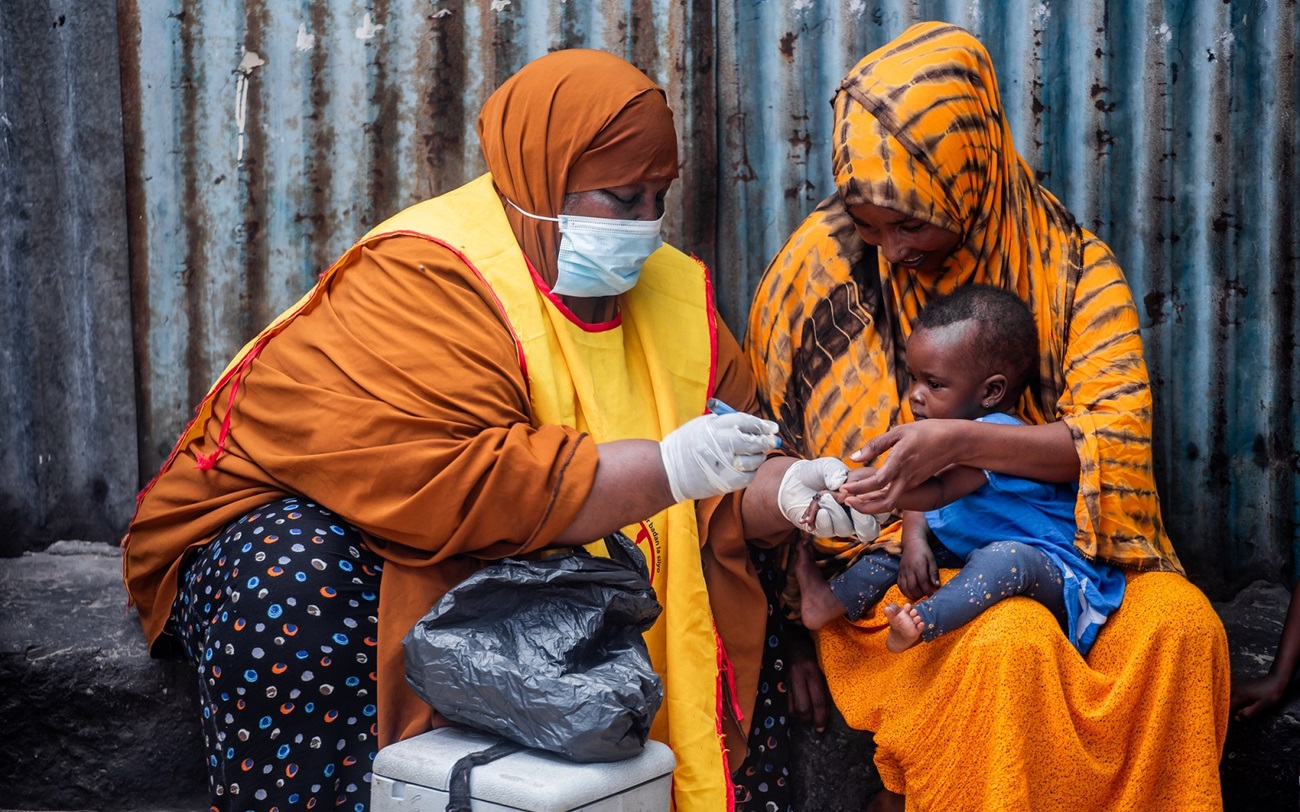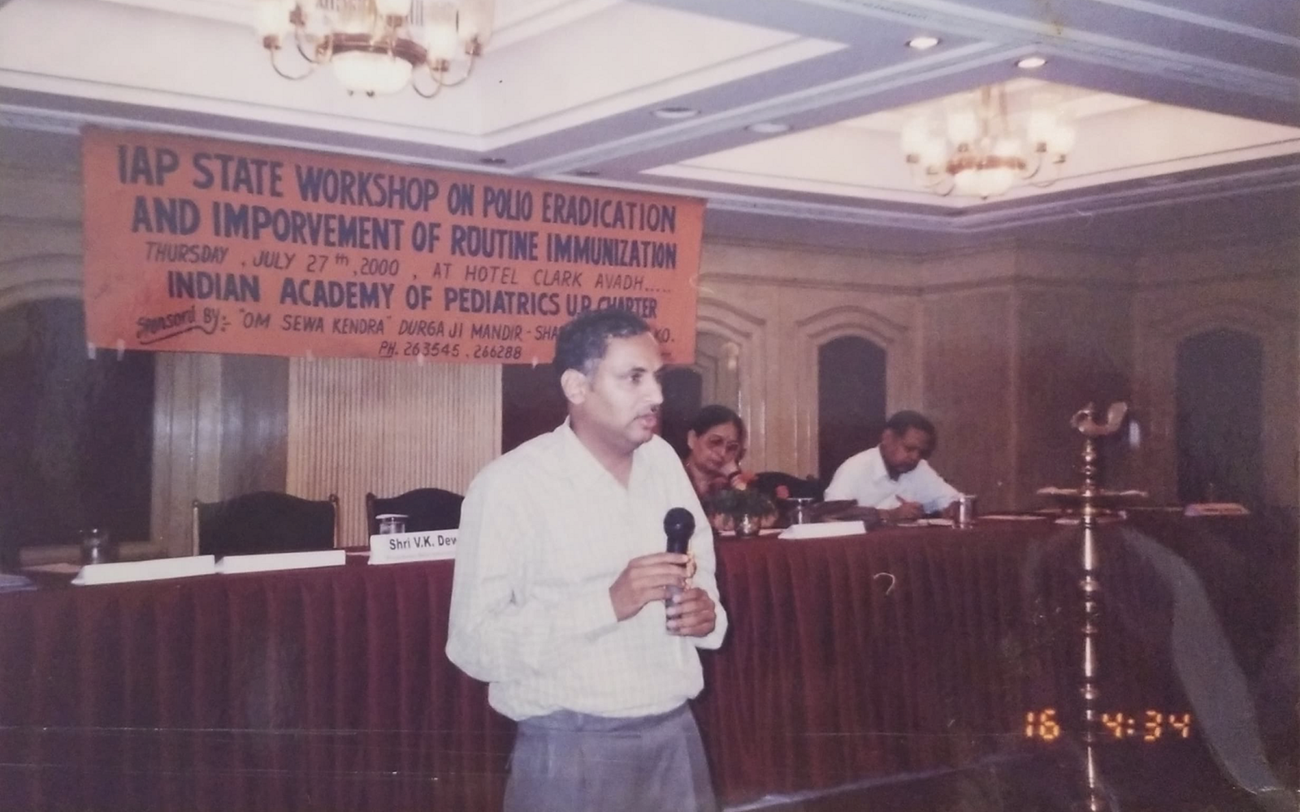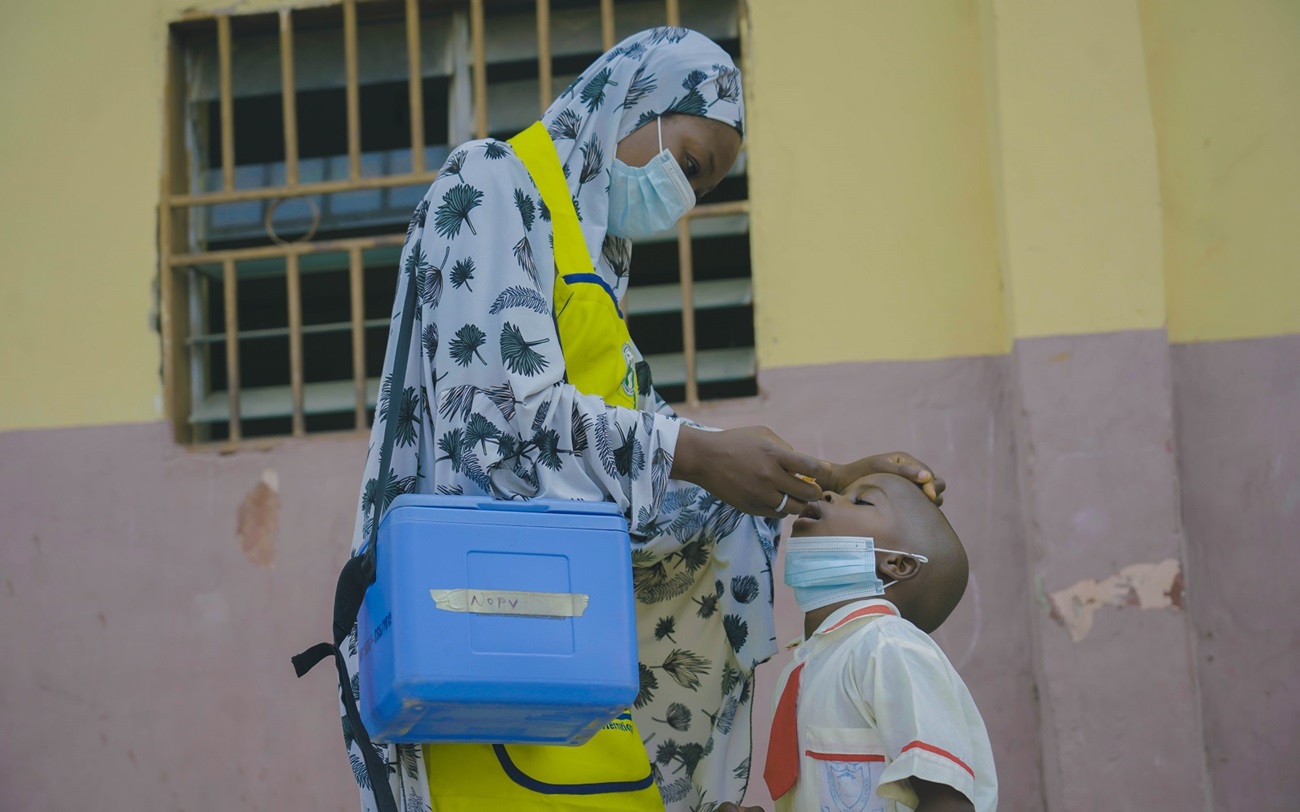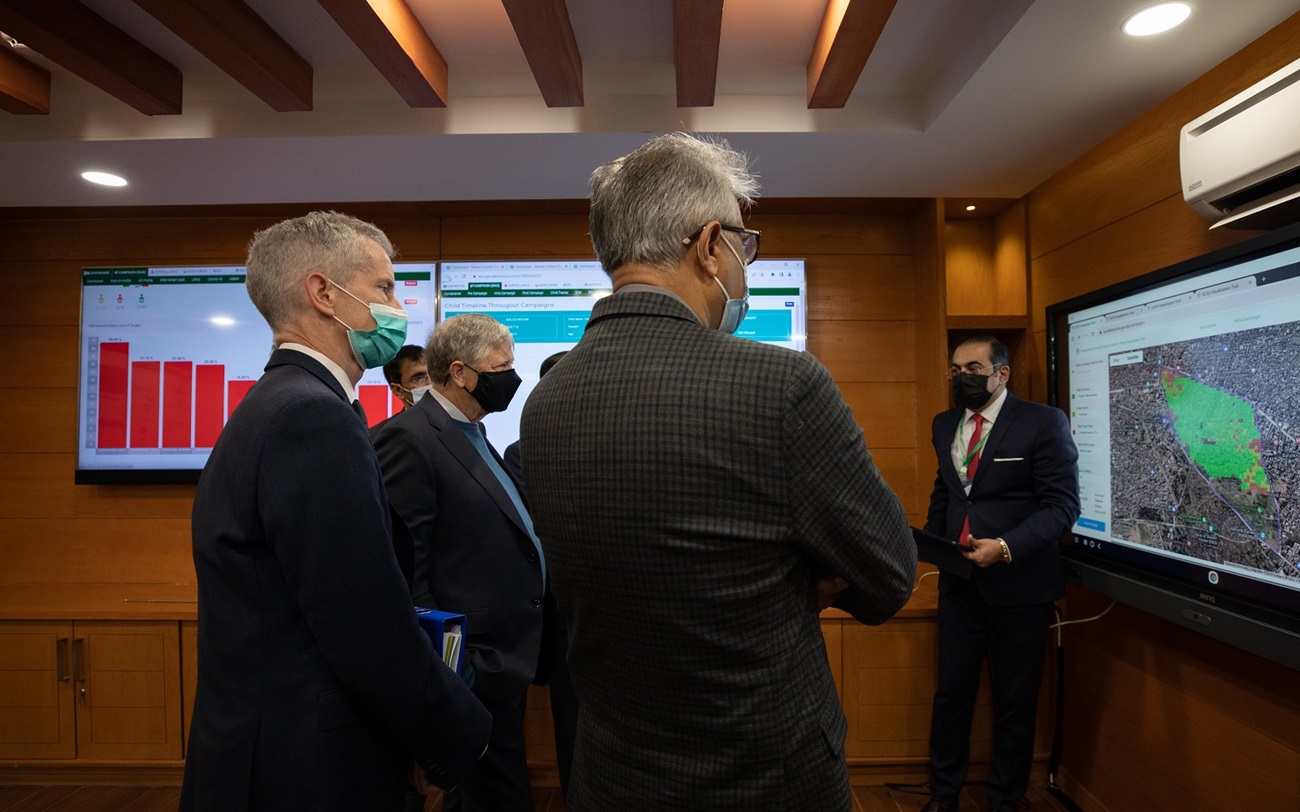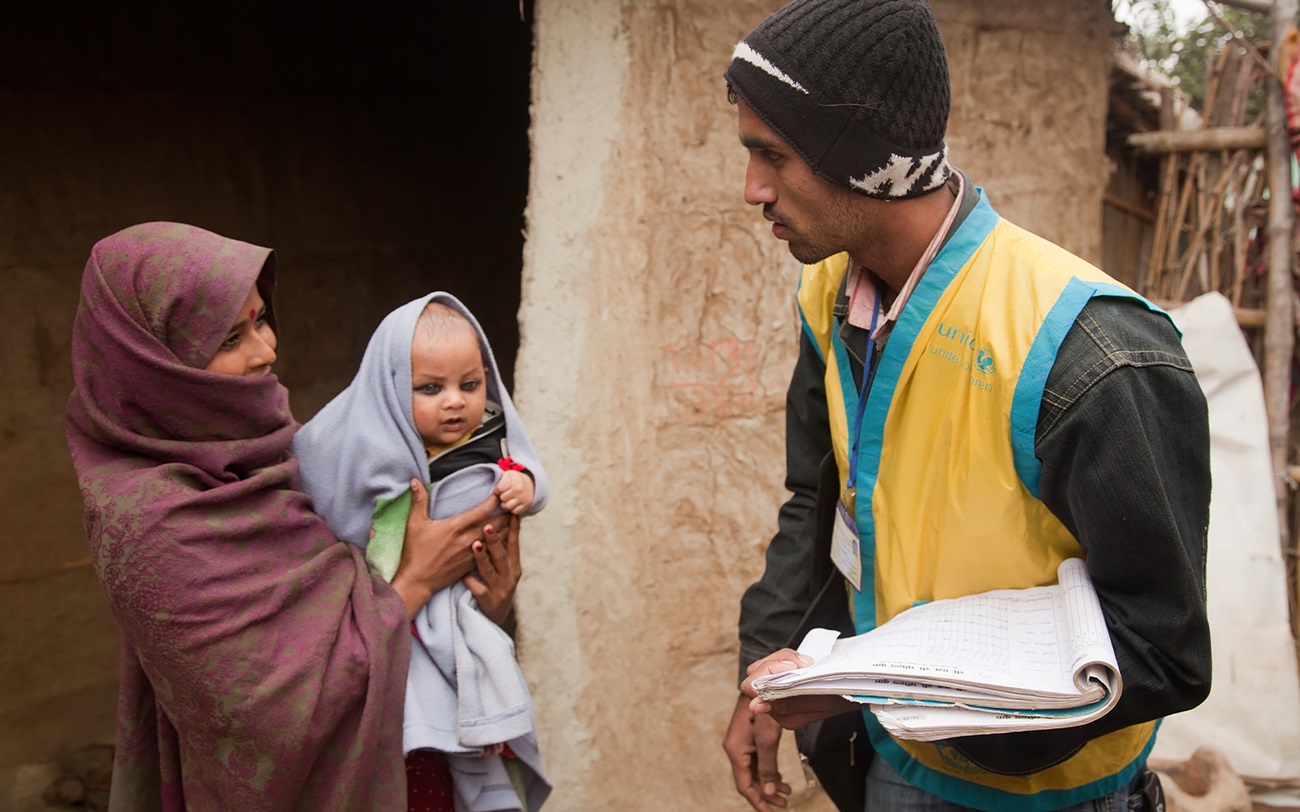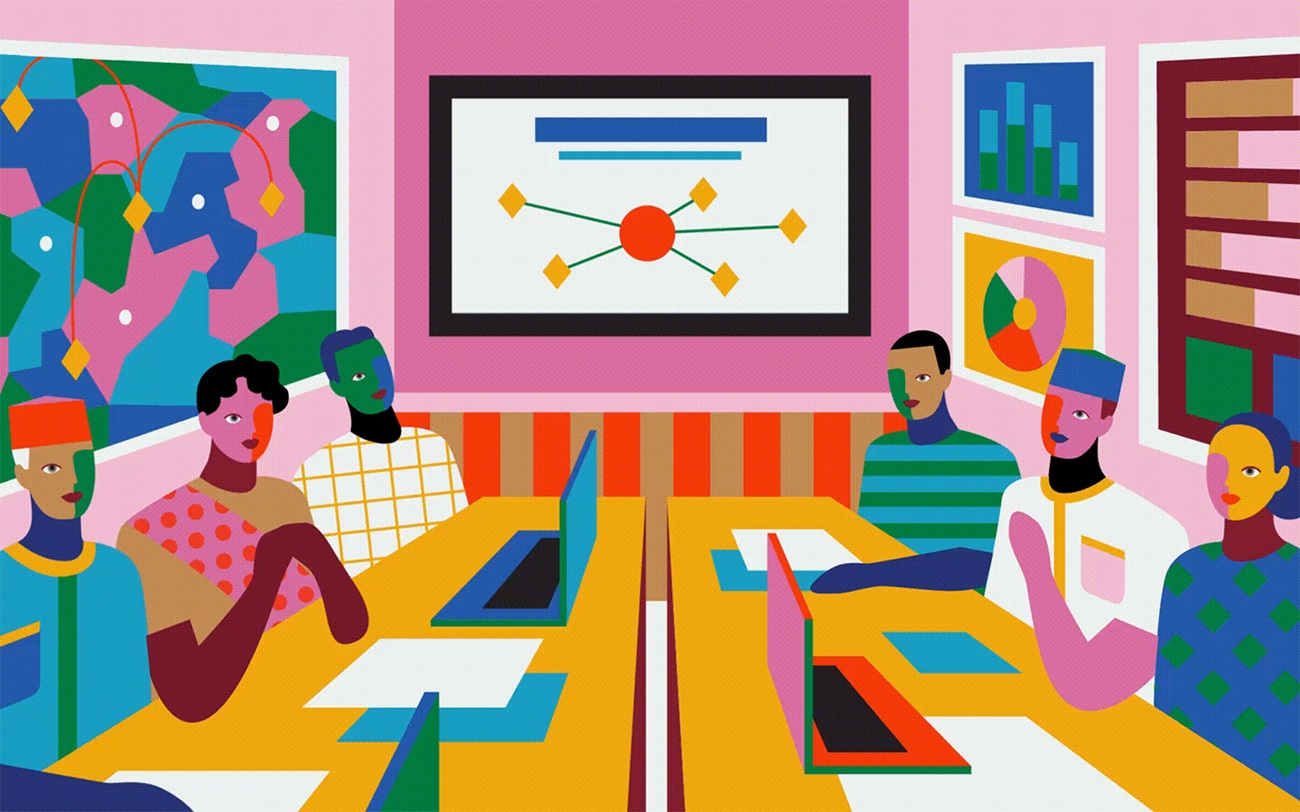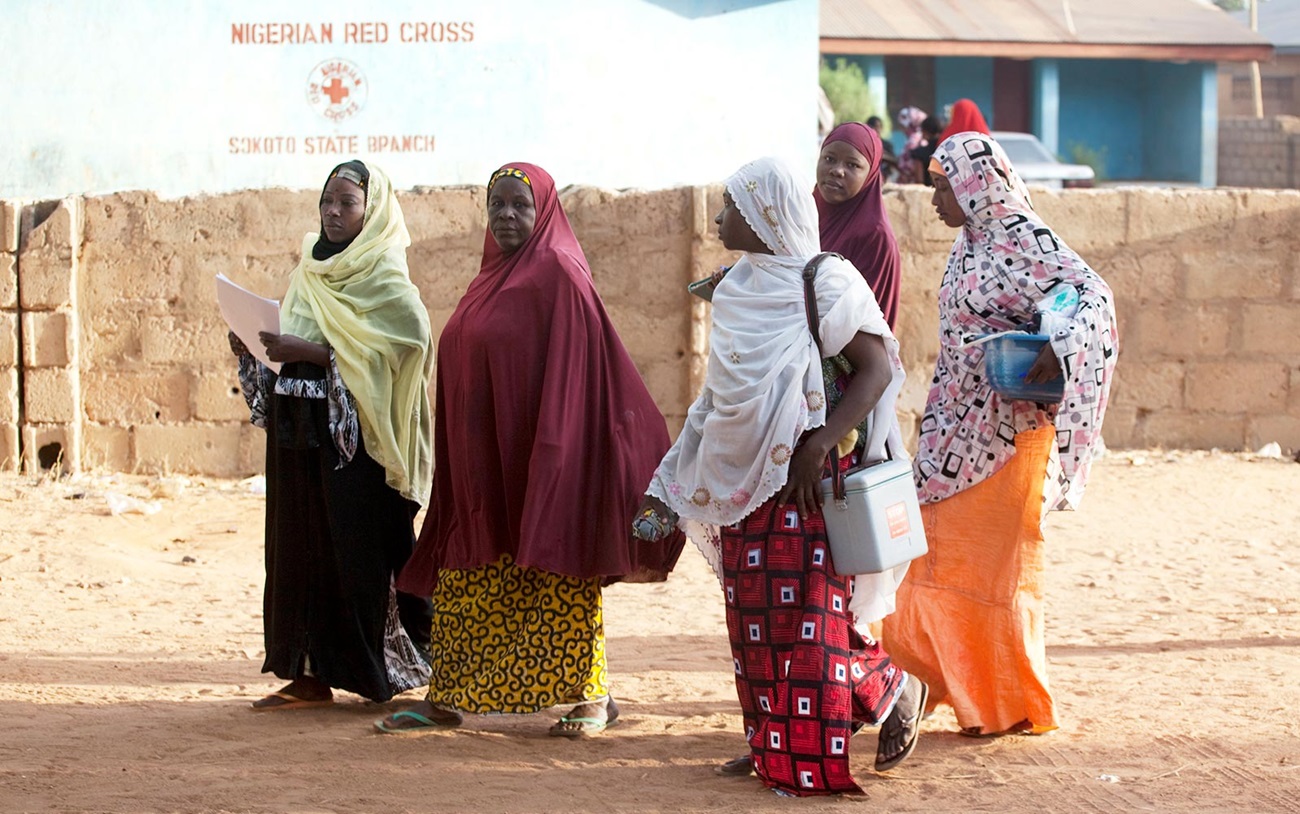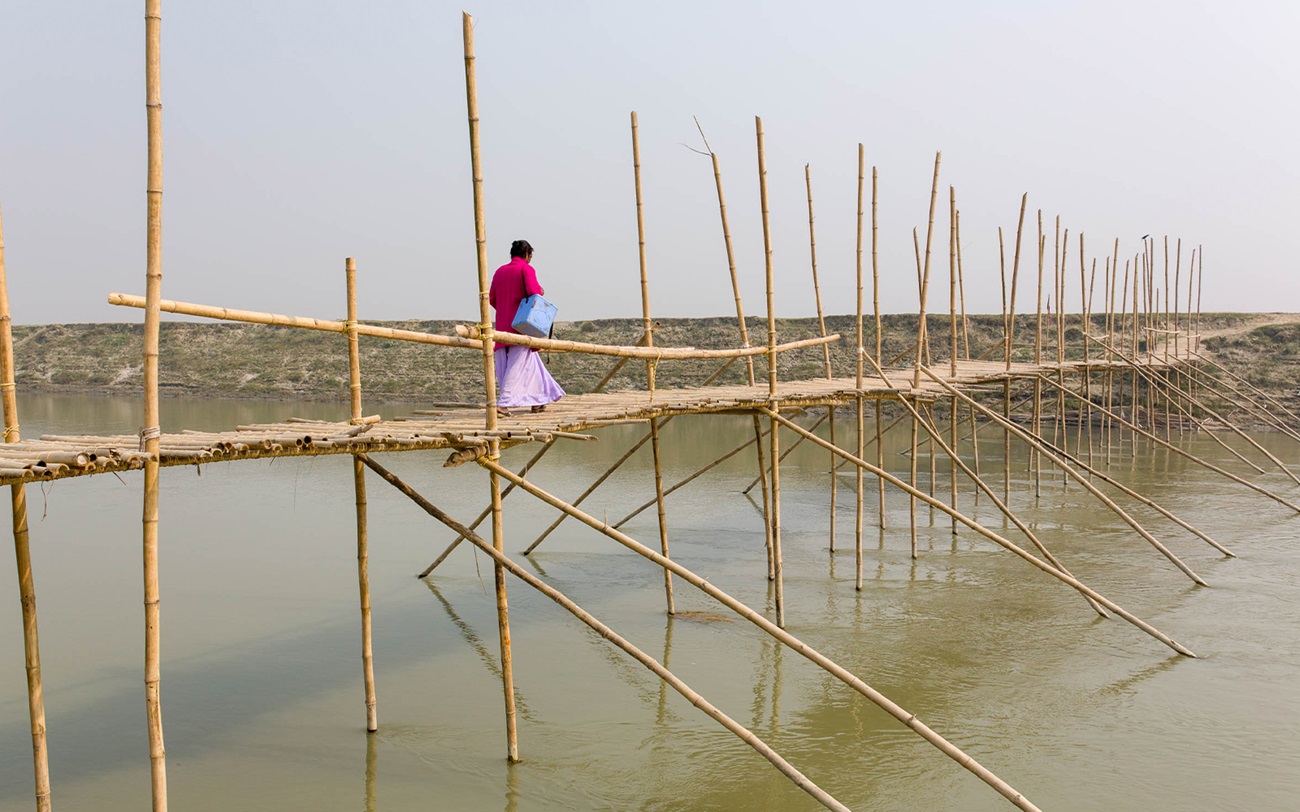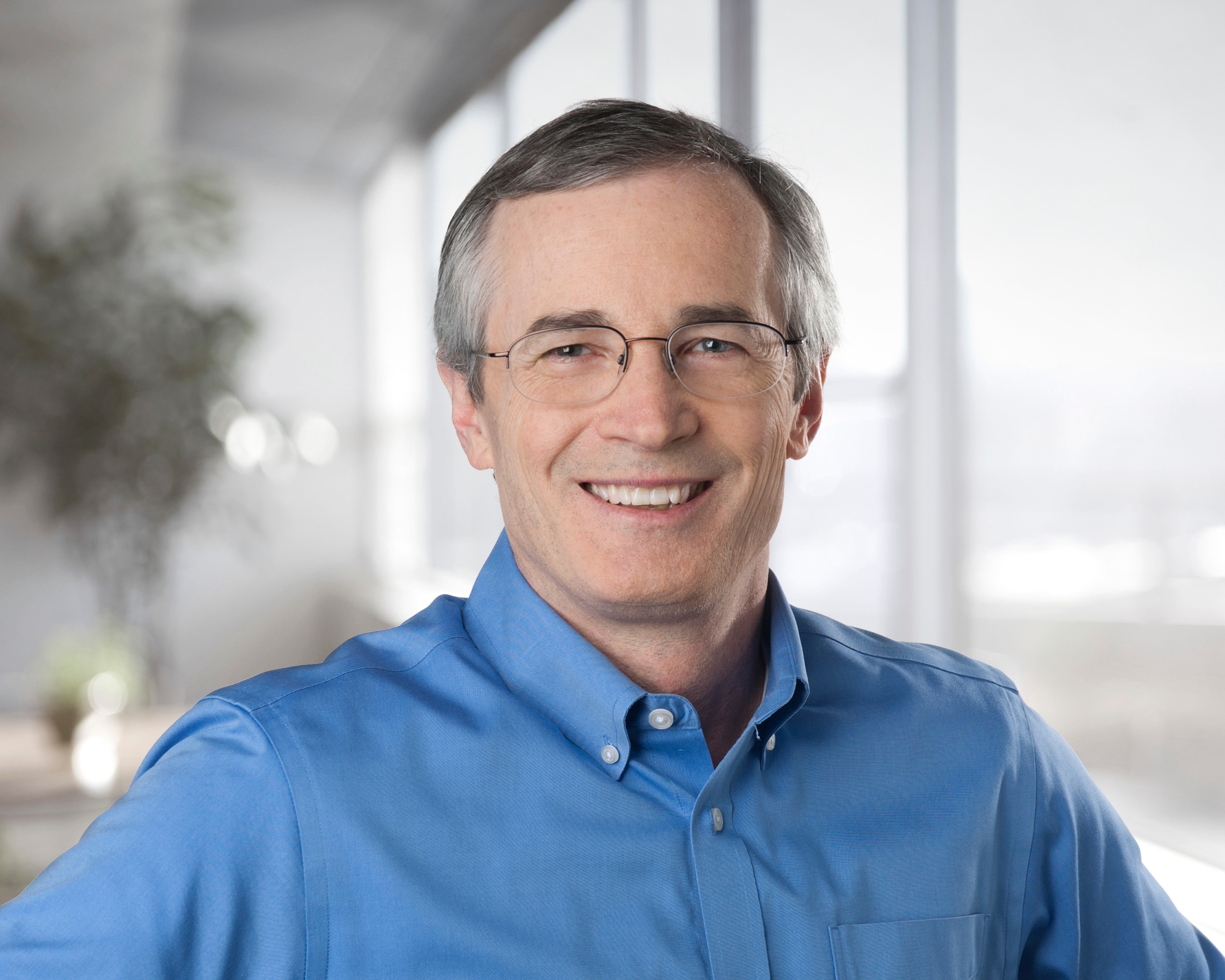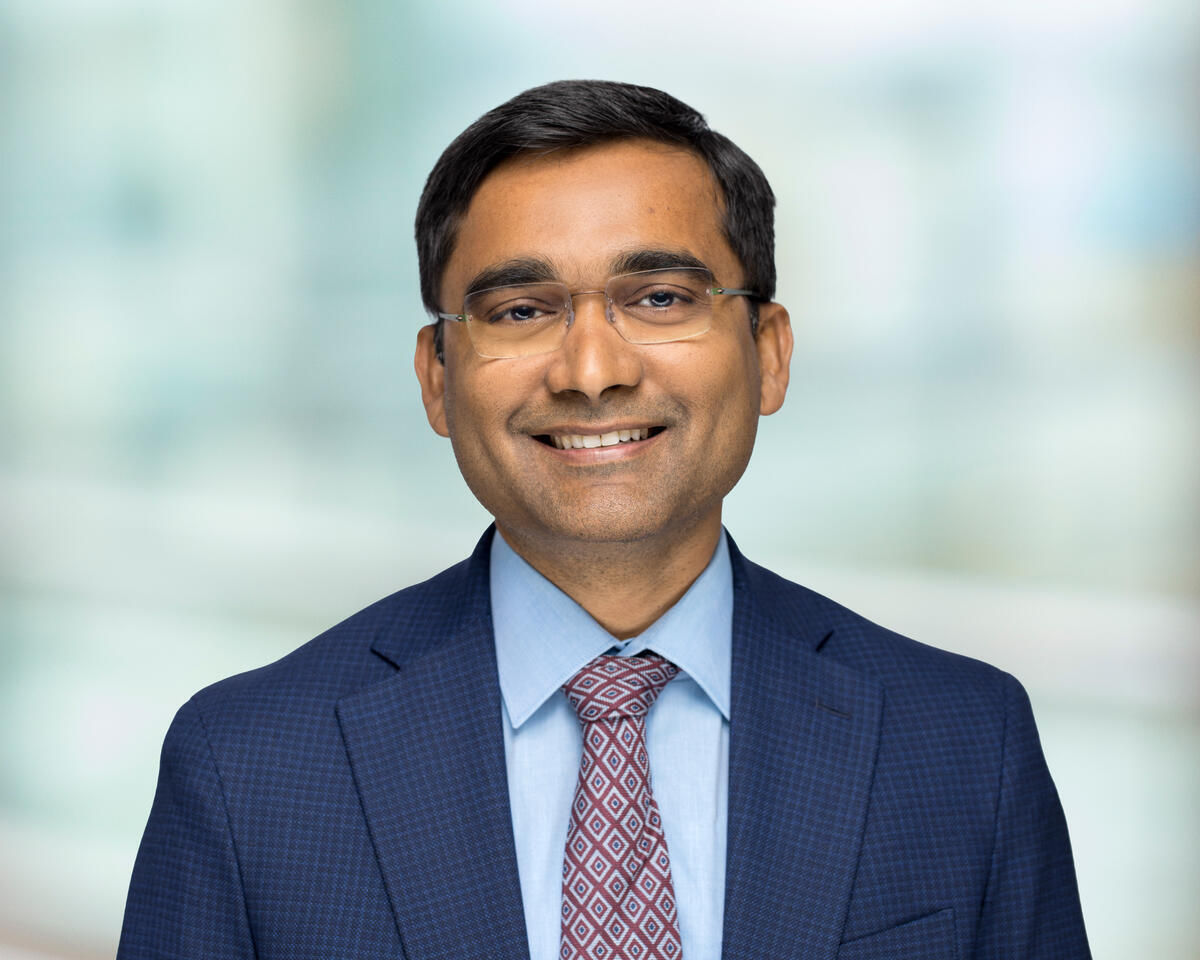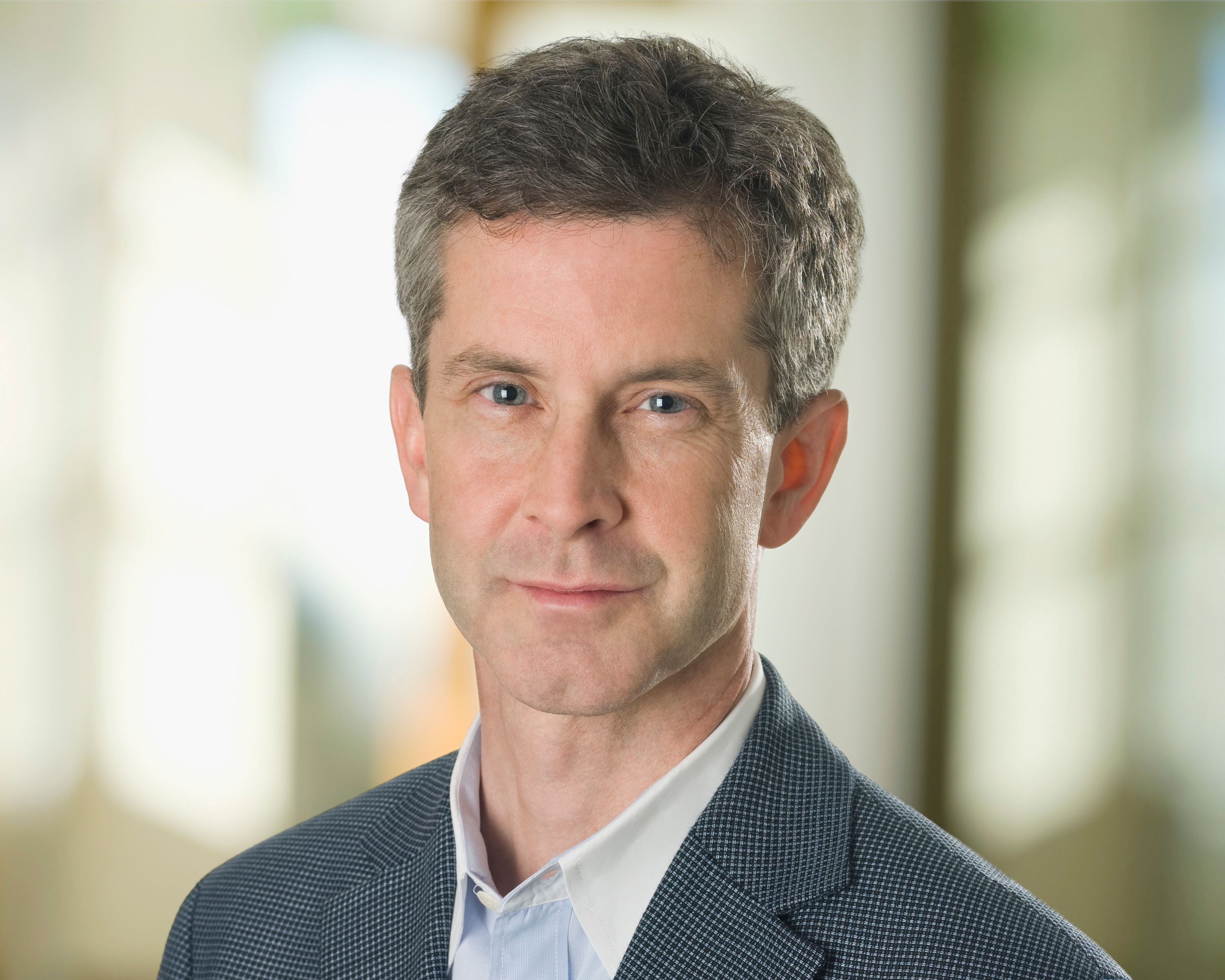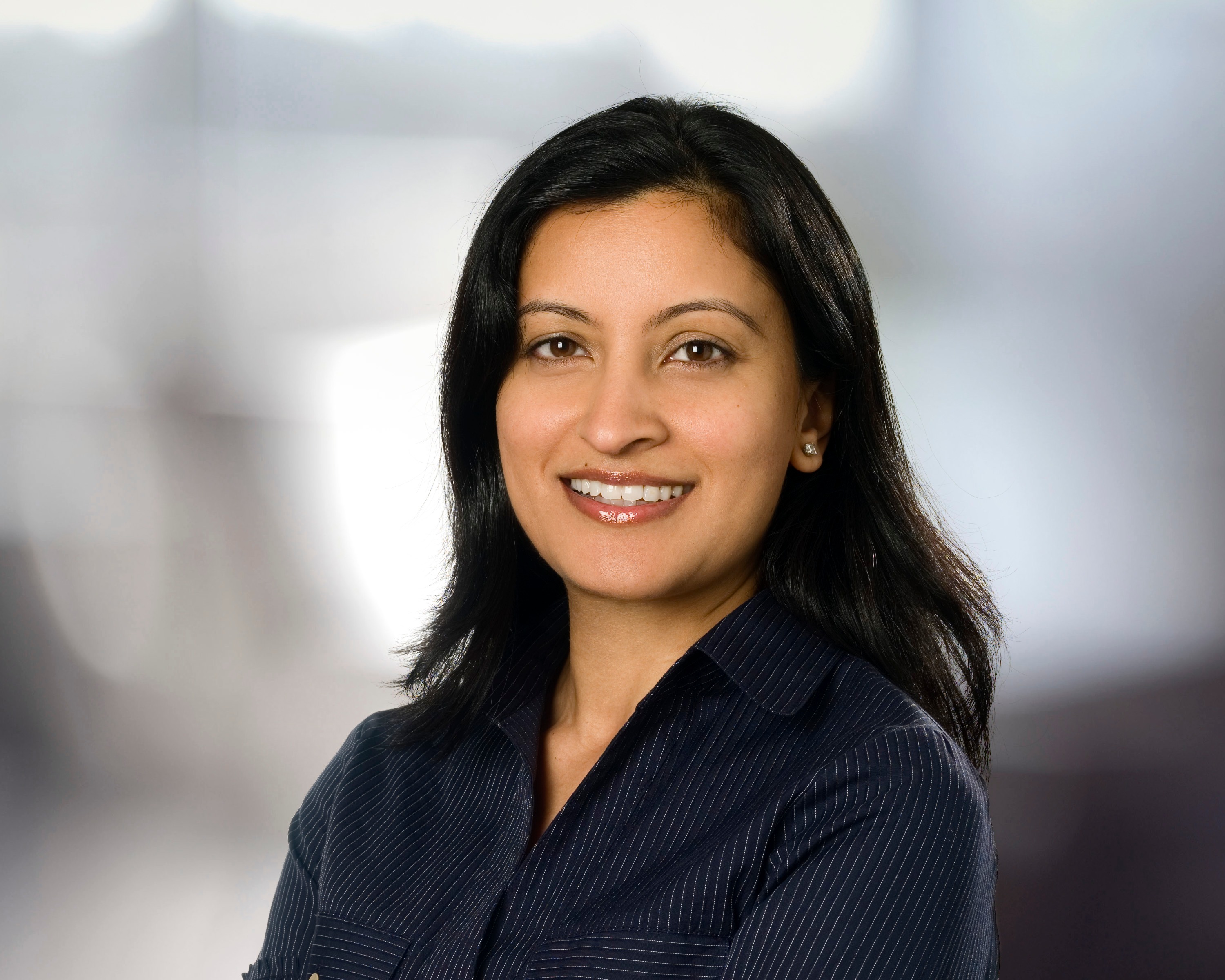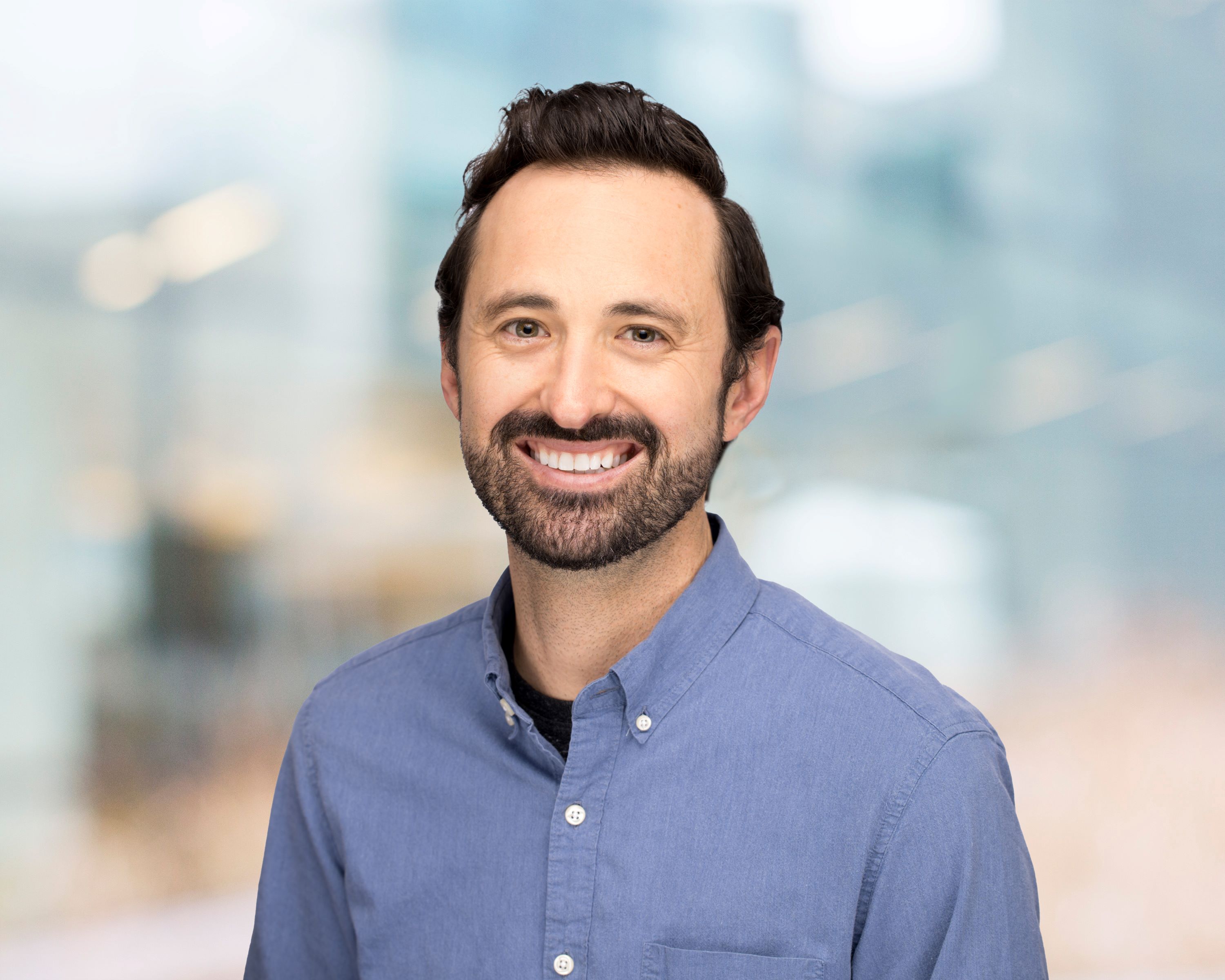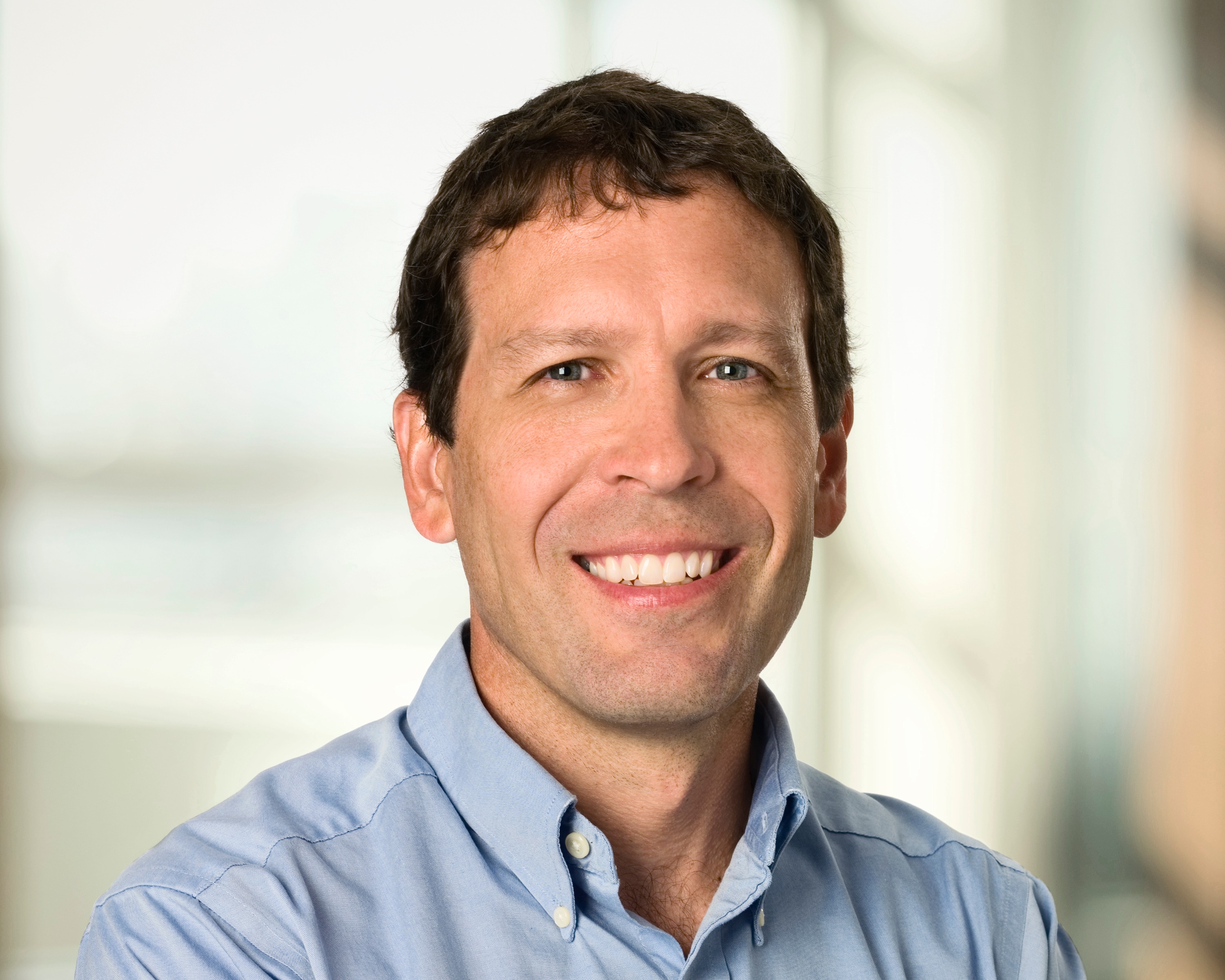Polio
Our goal
To eradicate polio worldwide.
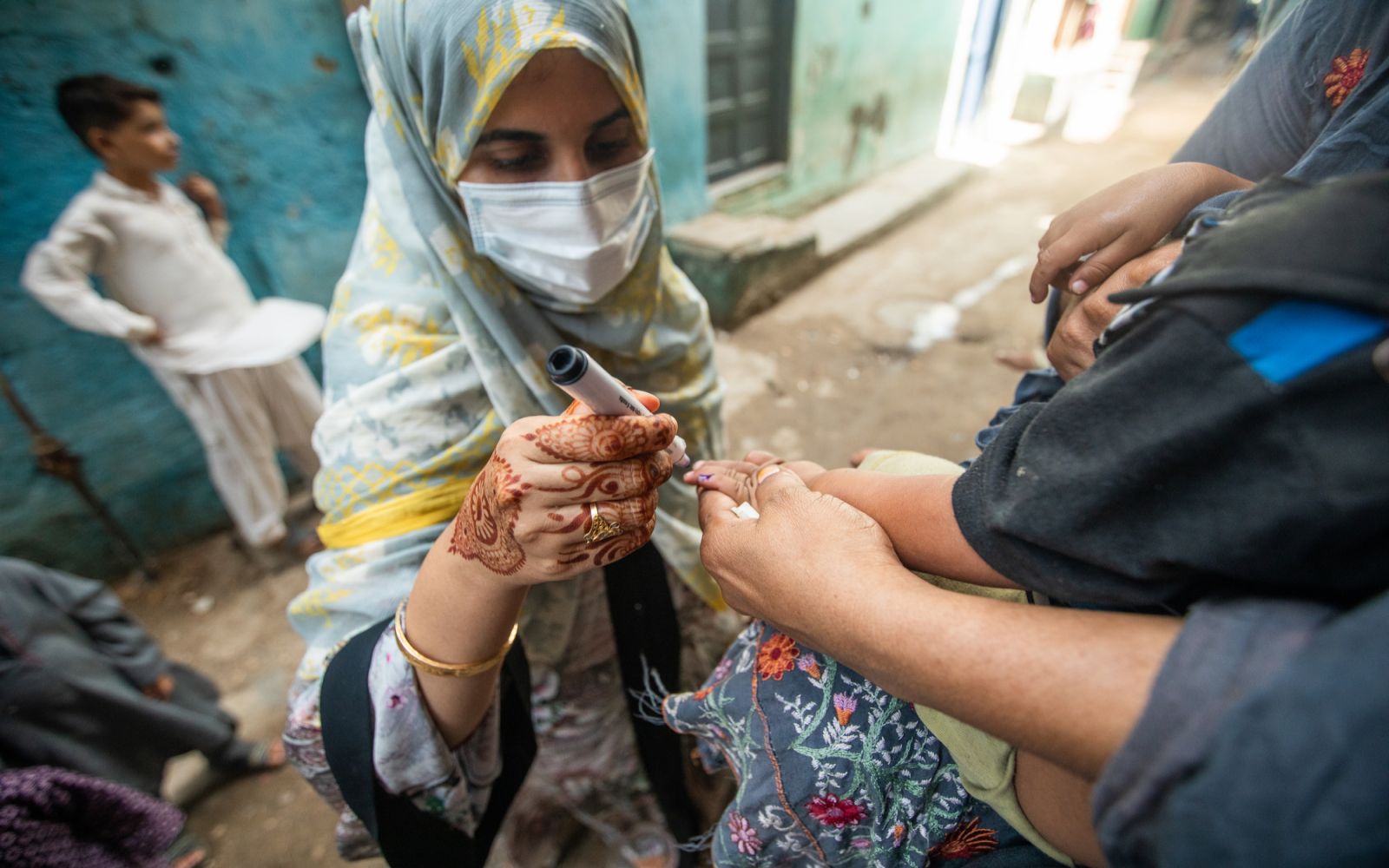
A polio vaccinator works in Karachi, Pakistan.©Gates Archive/[Khaula Jamil]
DEI progress report
At a glance
- In 1988, when the Global Polio Eradication Initiative (GPEI) was launched, polio was present in more than 125 countries and paralyzed about 1,000 children per day. Thanks to immunization efforts that have reached nearly 3 billion children, the incidence of polio has decreased by 99 percent since then.
- In 2020, the entire World Health Organization (WHO) African Region was certified free of wild poliovirus, four years after Nigeria—the last polio-endemic country in Africa—recorded its final case of wild polio. Today, wild polio is found only in Afghanistan and Pakistan.
- Despite this progress, if we fail to completely eradicate polio, within a decade we could witness a resurgence of 200,000 new cases annually, making polio a critical priority in global health. The job is not done: Efforts must continue to stop wild polio and end all forms of poliovirus globally.
- The foundation is a key supporter and partner of the GPEI.
The latest updates on polio
Our strategy
Polio eradication is a top priority of the foundation, and as a major supporter and partner of the GPEI, we contribute technical and financial resources to accelerate targeted vaccination campaigns, community mobilization, and routine immunizations. We also work with partners to improve polio surveillance and outbreak response; develop safer, more effective vaccines; and galvanize financial and political support for polio eradication efforts.
We have a unique ability to contribute to the fight against polio by taking big risks and making nontraditional investments. Examples include our investments in vaccine research and our establishment of emergency operations centers in Nigeria, Pakistan, and Afghanistan.
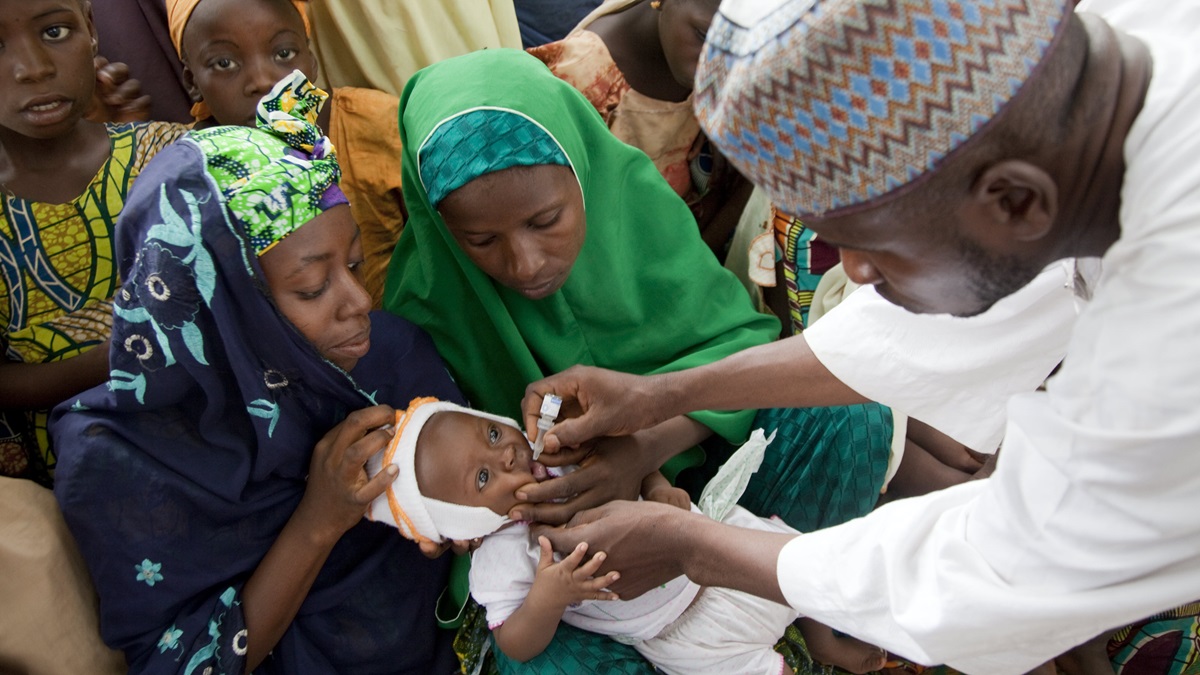
Children receiving oral polio vaccine at an event inaugurating a polio vaccination campaign in Kano, Nigeria.
Areas of focus
Why focus on polio?
Over the past three decades, the world has made tremendous progress toward eradicating polio. In 1988—when wild poliovirus was present in more than 125 countries and paralyzed 350,000 people every year, most of them young children—the World Health Assembly set a goal to eliminate the disease, and the GPEI was launched. Since then, immunization efforts have reduced the number of cases by more than 99 percent, saving more than 18 million children from paralysis. Today, wild polio is found only in Pakistan and Afghanistan.
Despite this progress, several challenges remain in reaching all children with vaccines. Wild poliovirus continues to circulate in parts of Pakistan and Afghanistan, and outbreaks of circulating vaccine-derived poliovirus (cVDPVs), a rare form of the virus that can emerge in underimmunized communities, are ongoing in parts of Africa and Asia. Efforts to reach unvaccinated children are often hampered by poor campaign quality, weak routine immunization, massive mobile populations, and insecurity. If we fail to eradicate this highly contagious disease, within a decade we could witness a resurgence of as many as 200,000 new cases annually.
At the World Health Assembly in 2012, 194 member states declared the eradication of polio a “programmatic emergency for global public health.” While eradication has taken longer than originally hoped, the GPEI and its donors are committed to overcoming the remaining challenges to eradication and ending all forms of the poliovirus for good. At the 2019 Reaching the Last Mile Forum in Abu Dhabi, donors pledged US$2.6 billion to support the program.
Experts estimate that eradicating polio would generate US$14 billion in cumulative cost savings by 2050 when compared with the cost to countries of controlling the virus indefinitely. This figure does not include additional health improvements resulting from other GPEI efforts, such as vitamin A supplementation or the much larger net benefits of eradication for countries that eliminated polio before the GPEI was launched.
In August 2020, the WHO African Region was officially certified free of wild poliovirus after Nigeria—the last polio-endemic country in Africa—recorded its final case of wild polio in 2016. This incredible public health achievement was the result of a decades-long effort across 47 African countries involving millions of health workers, innovative strategies to vaccinate children amid conflict and insecurity, and a huge disease surveillance network to test cases of paralysis and check sewage for the virus.
Bill Gates talks with polio survivors.
Global collaboration and innovation have produced new tools and approaches that can help improve logistical planning for polio eradication. In addition, refinements to the polio vaccine have improved the immune response to the remaining types of the disease. Today, only one strain of wild poliovirus (wild poliovirus type 1) remains in circulation. Wild poliovirus type 2 was declared eradicated in 2015, and wild poliovirus type 3 was declared eradicated in October 2019. New diagnostic, monitoring, and modeling tools are allowing faster and more accurate tracing of polio cases and transmission patterns.
To slow the spread of polio in their countries, Pakistan and Afghanistan have implemented national emergency plans overseen by their heads of state. These programs increase accountability and improve the quality of polio vaccination campaigns from the national to the local level. WHO is providing unprecedented levels of technical assistance to these countries, and improved vaccination campaigns are helping to reach more children.
Strategy leadership
Sign up for The Optimist newsletter
Subscribe to The Optimist to get weekly updates on the latest in global health, gender equality, education, and more.
By submitting your email to subscribe, you agree to the Bill & Melinda Gates Foundation's Privacy & Cookies Notice
Our Partners
We do our work in collaboration with grantees and other partners who join with us in taking risks, pushing for new solutions, and harnessing the transformative power of science and technology.
